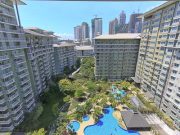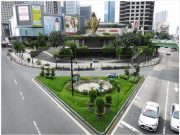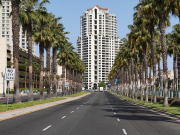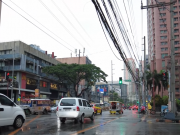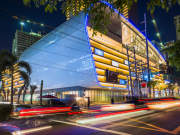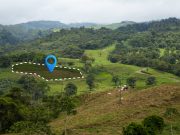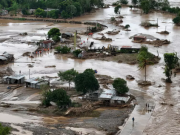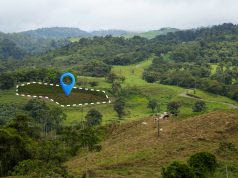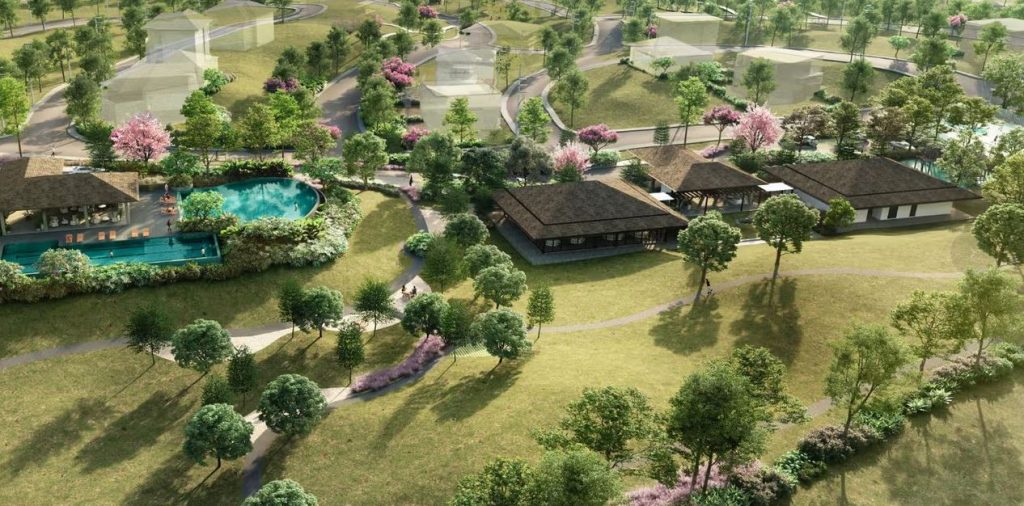
Executive Summary
By Sheila Viesca, Ph.D.
With insights from John Riad, CEO of HousingInteractive
The Philippine real estate market is changing. Driven by new lifestyles, remote work, and shifting buyer priorities, demand has moved past small city condos. Today’s buyers want space, community, and flexibility.
This report shows how condo conversions, the rise of townships, and hybrid work are reshaping the market. We’ve combined strategic insights from HousingInteractive, the country’s leading digital brokerage, with leadership perspectives from TalkShop, the Philippines’ authority in communication skills. Together, we provide a complete view of this market evolution, covering both practical and emotional aspects.
A New Kind of Buyer Has Emerged
The modern property buyer is no longer fixated solely on location. Today’s decisions are driven by a mix of factors reflecting a desire for a holistic lifestyle:
- Livability: Emphasizing walkability, access to green spaces, and controlled noise levels.
- Connectivity: Ensuring reliable internet access and convenient public transit options.
- Flexibility: Seeking ample space for dedicated remote work areas, study nooks, or home-based businesses.
- Health & Well-being: Prioritizing good ventilation, access to wellness amenities, and open areas.
According to HousingInteractive data, these new priorities are evident:

- 74% of new buyer inquiries now include “home office” as a key search term.
- Demand for condos under 35 sqm has declined by 22% since 2021.
- Township and house-and-lot developments have seen a 31% increase in page views and lead conversions.
People no longer want just a unit—they want a lifestyle.” “This shift has significant implications for how and where developers build.
says John Riad, CEO of HousingInteractive.
Condo Conversions: Repurposing the Metro
Metro Manila has an abundance of smaller condo units and underutilized commercial spaces. These are now being creatively transformed into new residential opportunities through condo conversions. This means repurposing existing buildings like old offices or hotels into modern condominium units. We’re seeing everything from historical buildings being adaptively reused to straightforward office-to-residential projects.
Why is this trend growing?
| Scarcity of Land: | Prime land in key cities is limited. Conversions offer a smart solution. |
| Sustainability: | Reusing existing structures is eco-friendly and faster than new construction. |
| Economic Sense: | Developers benefit from quicker project turnarounds and lower costs. |
| Unique Appeal: | Buyers want character, historical charm, and layouts that stand out from typical new builds. |
| Remote Work Impact: | Less demand for traditional office space frees up buildings for residential use. |
Benefits for Buyers:
| Prime Locations: | Conversions often mean established areas with existing infrastructure. |
| Unique Homes: | Buyers get distinct architectural features and a sense of history. |
| Faster Move-In: | Occupancy is often quicker than with pre-selling new developments. |
| More Space: | Units, especially from older office conversions, can be surprisingly spacious. |
Challenges to Address:
| Regulations: | Navigating permits from DHSUD and ensuring structural integrity are crucial. |
| Renovation: | Older buildings require significant updates, impacting timelines and costs. |
| Perception: | Overcoming any lingering doubts about living in a converted space is key to buyer confidence. |
| Amenities: | Integrating modern features into existing structures requires innovative design. |
Real-world impact: In Makati and Ortigas, over 300 units initially for foreign renters are now marketed as starter homes for local professionals and young couples. It shows a clear strategy to reuse CBD properties previously reliant on foot traffic and expat demand. Developers are actively converting smaller condo inventories into larger, two-bedroom layouts and retrofitting older buildings for better ventilation, coworking spaces, and superior internet. Even commercial spaces are becoming residential clusters or co-living facilities. It is a strategic pivot to meet current market needs.
The Rise of Township Living: The “City Within a City” Concept
The pandemic highlighted a crucial need for self-contained, integrated communities in the Philippines. This is the core of the township model: master-planned developments that combine residential, commercial, retail, educational, healthcare, and recreational facilities into a single ecosystem. It’s the “Live, Work, Play, Learn” philosophy brought to life.
Why townships are gaining traction in the Philippines:
| Ultimate Convenience: | Everything you need is within reach. This drastically cuts commute times and daily stress. |
| Enhanced Quality of Life: | Residents enjoy abundant green spaces, open areas, and dedicated amenities like parks, gyms, and pools, all promoting well-being. |
| Built-in Security: | Gated communities with controlled access offer unmatched peace of mind. |
| Strong Community: | These environments foster a sense of belonging with ample opportunities for social interaction. |
| Economic Hubs: | Townships create on-site employment through office parks and various businesses, boosting local economies. |
| Modern Infrastructure: | They often feature improved roads, utilities, and integrated public transport within their boundaries. |
Key Features You’ll Find:
| Diverse Housing: | Options range from high-rise condos to townhouses and, in some cases, even single-detached homes. |
| Commercial Centers: | Integrated malls and vibrant retail strips are standard. |
| Office Spaces: | Dedicated buildings for BPOs and corporate offices. |
| Education & Healthcare: | On-site schools, universities, clinics, and hospitals provide essential services. |
| Leisure & Entertainment: | Restaurants, cafes, cinemas, and various recreational spaces. |
| Green Spaces: | Extensive parks, sports facilities, and jogging paths are integral. |
Leading Township Examples
- Iloilo Business Park stands as a prime example. It is a walkable Central Business District, offering a mix of condominiums, office spaces, and leisure parks.
- Vermosa in Cavite showcases another successful model. This township uniquely combines sports complexes, hospitals, and schools within its integrated community.
- The Upper East in Bacolod demonstrates innovative urban planning. It’s a vast 34-hectare community built on a repurposed sugar estate.
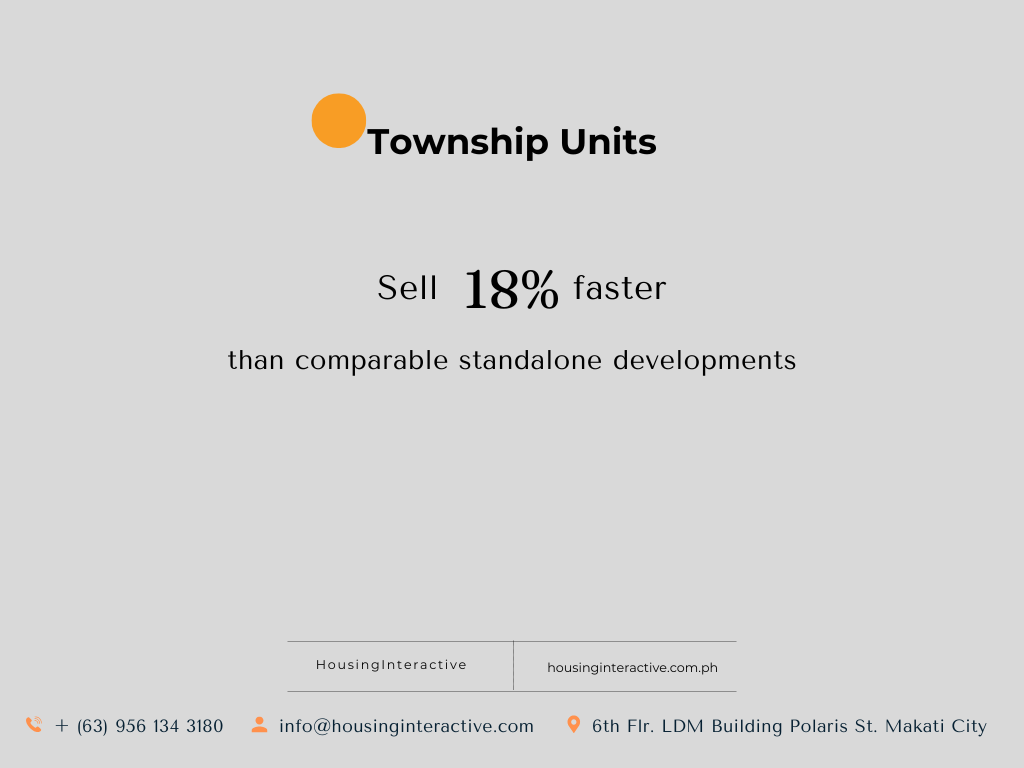
Important Considerations:
- Association Fees: Due to the comprehensive amenities, these fees can be higher than in traditional developments.
- Phased Development: Townships are built in phases, meaning the full range of amenities might take time to complete. This could lead to initial inconvenience during the ongoing construction.
The Influence of Remote Work and Regional Hubs
Remote work is no longer temporary; it’s a fundamental lifestyle choice. This shift is reshaping not just where Filipinos live, but also their reasons for choosing a home.
Remote Work’s Impact:
Outsource Accelerator highlights these changes:
- Pre-pandemic Familiarity: The Philippines was already accustomed to remote work due to its strong outsourced and freelance sectors.
- Significant Adoption: More than half (52%) of Filipino workers had already been working from home for years, according to a JobStreet study. This surged to 85% during the COVID-19 pandemic.
- Strong Preference: Despite mental health challenges, roughly half (49%) of employees still prefer to remain remote.
- Long-Term Outlook: The Philippines, consistent with its Southeast Asian neighbors, anticipates a long-term commitment to remote work.
- Cost savings, better air quality, and improved work-life balance are the top reasons for this relocation desire.
Filipinos Relocating Outside Metro Manila
- Downward Trend for Metro Manila: Metro Manila’s share of residents relocating elsewhere (RRELs) significantly decreased from 57.4% in 2018 to 28.7% in Q1 2023. This indicates a strong movement away from the capital.
- Economic Drivers: A primary reason for this out-migration is economic factors and the high cost of living in Metro Manila.
Remote work is reshaping where and why people live, driving significant interest in areas outside Metro Manila. HousingInteractive data confirms strong property search trends in:
- Lipa, Batangas: This is a rapidly growing city. It’s known for its cool climate, well-planned communities, and easy access to Metro Manila.
- Tarlac: A multicultural province in Central Luzon, Tarlac is recognized for its extensive farmlands and crucial role as a transportation hub.
- Baguio: The “Summer Capital of the Philippines” offers a cool climate, pine-filled landscapes, and a lively cultural scene in the Cordillera highlands.
- Davao: As a highly urbanized city in Mindanao, Davao serves as the region’s main economic center and is one of the world’s largest cities by land area.
These locations are quickly becoming prime residential spots, reflecting the evolving preferences of Filipino homebuyers.
New Micro-Cities Are Thriving
Beyond these individual cities, new mini-city developments are attracting both investors and homebuyers. These are purpose-built for hybrid work and integrated living.
Leading examples include:
- Taguig’s Arca South: A master-planned estate designed for mixed-use, focusing on accessibility and open spaces.
- Cebu’s South Road Properties (SRP): A massive reclamation area transforming into a new urban center with commercial, residential, and recreational zones.
- New Clark City: A green, smart, and disaster-resilient metropolis positioned as a future administrative and economic hub.
These hubs offer specific advantages:
- Dedicated bike and pedestrian lanes: Promoting healthier commutes and local mobility.
- EV charging infrastructure: Supporting sustainable transportation options.
- Work pods in public parks: Providing flexible, outdoor workspaces.
- Flood-resilient, energy-efficient construction: Ensuring long-term durability and lower operating costs.
HousingInteractive projects property prices in these areas to increase 10–14% annually over the next five years. This signals strong growth and investment potential.
Lipa City: A Blueprint for Future-Proofed Communities
Lipa City, Batangas, stands out as a leading example of this trend. Just two hours from Metro Manila, it’s quickly becoming a top residential alternative. Its cool climate, high elevation, and direct access via the STAR Tollway make it an ideal choice. Lipa now hosts master-planned developments that offer urban comforts alongside suburban tranquility.
Key growth indicators for Lipa:
- Faster Sales for Larger Units: Township projects like NuVista Lipa and Camella Lipa Heights report quicker sell-out rates for more spacious homes.
- Family Migration: Increased enrollment in Lipa’s international and progressive schools points to more families relocating here.
- Lifestyle Retail Growth: The rise of “lifestyle malls” and eco-conscious dining strips supports a vibrant local economy.
- Remote Work Ready: Broadband access covers over 90% of barangays, making it perfect for professionals working remotely.
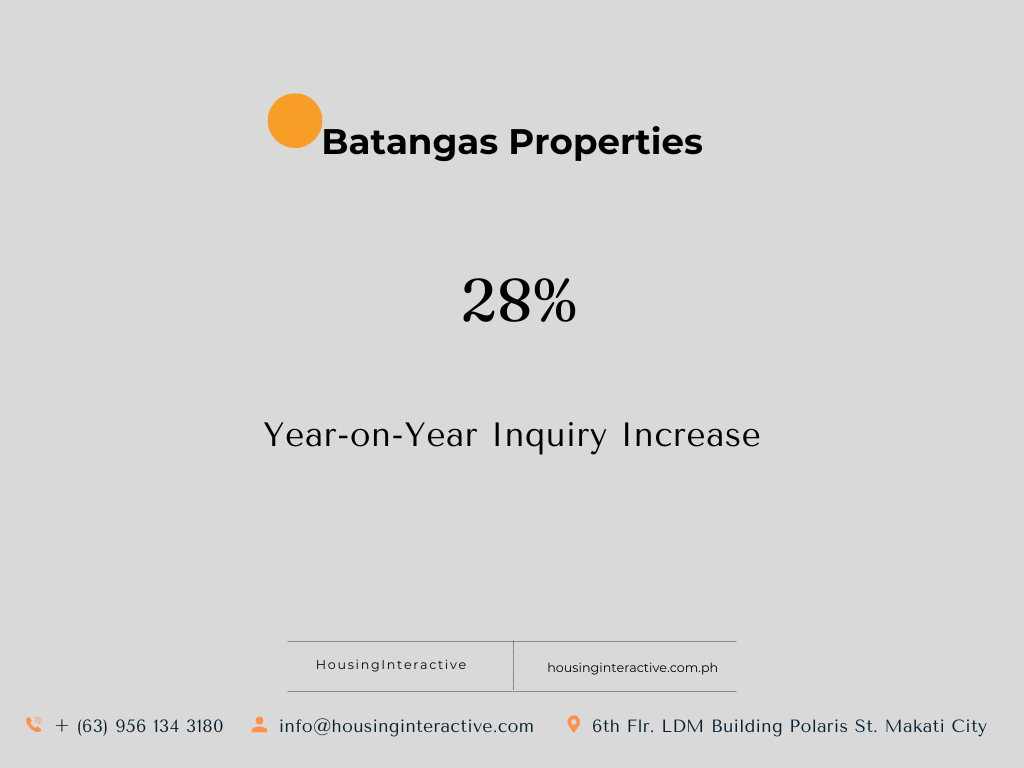
HousingInteractive reports a 28% year-on-year increase in inquiries for Batangas properties, with Lipa leading the demand. Additionally, TalkShop has partnered with Lipa-based firms and schools to launch communication and remote work coaching programs, further preparing residents for hybrid work models.
As Sheila Viesca, CEO of TalkShop, states,
Lipa shows what’s possible when infrastructure, lifestyle, and learning all come together. It’s not just a city—it’s a community being future-proofed.
Developers Are Responding: Redesigning for the Future
Developers are actively redesigning their projects to meet the needs of today’s buyers. They’re focusing on core demands:
- Flexible Spaces: Expect to see more co-working lounges and flexible rooms within units and common areas.
- Guaranteed Connectivity: Developers are partnering with internet providers to ensure high-speed, reliable service.
- Openness and Recreation: There’s a strong emphasis on open air, balconies, and dedicated recreational zones.
- Essential Proximity: New developments are now located near schools, hospitals, and wellness centers, not just malls.
- Livable Density: Even in high-rise buildings, the focus is on better airflow, increased privacy, and expansive common spaces.
- Flexible Ownership: Some developers are offering rent-to-own models to help younger buyers achieve homeownership.
Sustainability is Now Standard
Today’s buyers prioritize eco-conscious living, and developers are responding by making sustainability a core standard in township design:
- Green-certified buildings are becoming the norm, meeting high environmental performance standards.
- Rainwater collection systems are being integrated for water conservation.
- Solar integration is reducing energy consumption across developments.
- Abundant green spaces are enhancing both environmental impact and property value.
Recent HousingInteractive surveys confirm this trend:
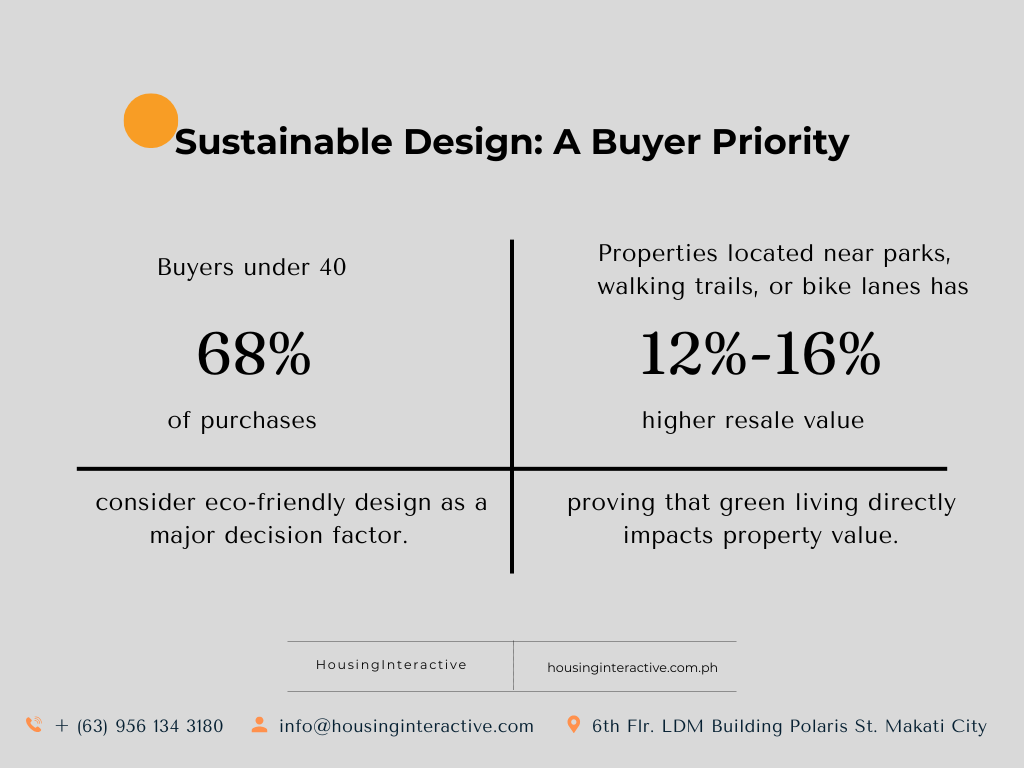
Forward-looking townships like Azuela Cove in Davao, Nuvali in Laguna, and Priland’s Northwoods in Cebu are leading this charge. TalkShop also helps by training sales teams on “green literacy” to effectively communicate these benefits.
As Sheila Viesca notes,
Sustainability is no longer a bonus—it’s the baseline. People want to live in spaces that respect both future and community.
Buyer Motivations: From ROI to Well-being
TalkShop’s surveys show a dramatic shift in what homebuyers prioritize. Pre-pandemic, the focus was on Return on Investment (ROI) and rental income. Now, buyers prioritize security, family needs, and adaptability.
Many are first-time buyers with hybrid or home-based jobs. They seek homes offering:
- Comfortable space for living and working.
- Proximity to essentials like groceries, schools, and healthcare.
- Reliable internet and backup power.
This represents a clear move from speculative buying to practical, long-term ownership.
Emotional Drivers of Lifestyle Migration
Beyond finances, emotions drive many relocation decisions. TalkShop’s studies highlight three key emotional drivers:
- Well-being: Buyers link provincial homes with mental clarity, space, and stronger family bonds.
- Resilience: The pandemic spurred a desire for secure, disaster-resilient homes in less congested areas.
- Purpose: Many returning OFWs or urban professionals want to “come home” and contribute locally.
This focus on “return, reclaim, and rebuild” is changing how developers market homes. They’re selling meaningful places to restart life, not just investments.
A HousingInteractive agent noted,
We’re seeing more buyers ask not just ‘what can I afford?’ but ‘where can I flourish?
This drives the success of wellness-oriented developments that include parks, gardens, meditation spaces, and clinics in their plans.
HousingInteractive and TalkShop: Guiding Your Real Estate Transition
For first-time buyers, especially those relocating or purchasing outside Metro Manila, the process can be daunting. HousingInteractive and TalkShop offer a powerful tandem approach, addressing both the technical and emotional aspects of this significant life transition.
A. HousingInteractive’s Evolving Tools for New Buyers
Buying a home, especially when relocating outside Metro Manila, can feel overwhelming. HousingInteractive and TalkShop offer a powerful, combined approach to simplify this major life change, addressing both the practical and emotional aspects.
HousingInteractive has enhanced its services to meet evolving market demands:
- Smart Listings: Their listings now highlight crucial details like home office suitability, internet speed, and work-from-home friendliness.
- Lifestyle Filter: A new “lifestyle and neighborhood” filter helps users prioritize what matters most: green spaces, community access, and proximity to essentials.
- Expert Guidance: Dedicated agents are now trained to advise on township opportunities and long-term livability.
As John Riad, CEO of HousingInteractive, puts it,
It’s not just a transaction anymore. It’s a transition. Our platform is designed to walk with the buyer through every stage of that change.
B. TalkShop: The Human Element of Transition
TalkShop, with two decades of expertise in communication and transformation, provides essential support for adjusting to new living and work arrangements:
- Remote Work Skills: They train professionals on remote collaboration and building a strong digital presence.
- Leadership for Distributed Teams: Managers learn to lead remote teams with empathy and clarity.
- Family Relocation Support: TalkShop coaches families transitioning from city to provincial life.
- Cultural Readiness: They offer cultural intelligence and business etiquette for buyers returning to the Philippines from abroad.
- Transition Workshops: Families get practical support for adjusting to new provincial lifestyles.
Buying a home today is a life change—not just a financial decision. We help clients develop the skills to thrive where they choose to grow.
says Sheila Viesca, CEO of TalkShop.
Together, HousingInteractive and TalkShop ensure your move is not just successful but empowering.
Sheila Viesca concludes,
A house is a structure. A home is a transformation. That’s what we support.
Conclusion: Quality of Life Drives Real Estate
The Philippine real estate market has evolved beyond simple cost per square meter. It’s now fundamentally about quality of life. Buyers prioritize:
- Flexible spaces for living and working seamlessly.
- A strong sense of community and safety in integrated environments.
- The freedom to grow professionally without being tied to a specific location.
HousingInteractive empowers this journey with cutting-edge tools, sharp data, and broad market reach. TalkShop ensures individuals are empowered, articulate, and ready for these transitions. Together, they form a real estate ecosystem that supports transformation, not just transactions.



